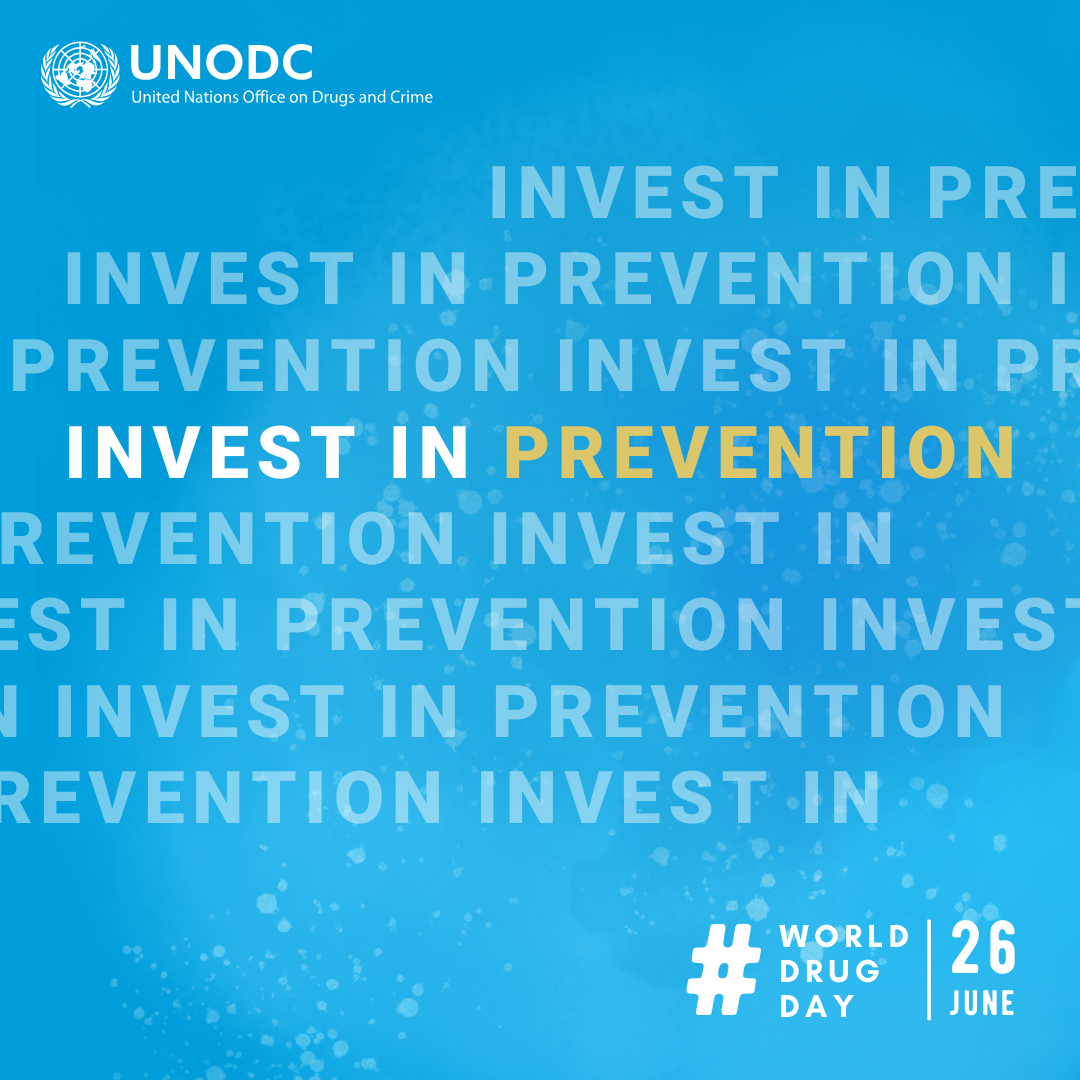International Day against Drug Abuse and Illicit Trafficking
International Day against Drug Abuse and Illicit Trafficking
By resolution 42/112 of 7 December 1987, the General Assembly of the United Nations decided to observe 26 June as the International Day against Drug Abuse and Illicit Trafficking as an expression of its determination to strengthen action and cooperation to achieve the goal of an international society free of drug abuse.
Drug abuse scenario in the world
Drug use continues to be high worldwide. In 2021, 1 in every 17 people aged 15–64 in the world had used a drug in the past 12 months. The estimated number of users grew from 240 million in 2011 to 296 million in 2021 (5.8 per cent of the global population aged 15–64). This is a 23 per cent increase, partly due to population growth.
Cannabis continues to be the most used drug, with an estimated 219 million users (4.3 per cent of the global adult population) in 2021. Use of the drug is increasing and although globally cannabis users are mostly men (about 70 per cent), the gender divide is reducing in some subregions; women account for 42 per cent of cannabis users in North America.
It is estimated that in 2021, 36 million people had used amphetamines, 22 million had used cocaine and 20 million had used “ecstasy”-type substances in the past year. The proportion of female users is higher in the case of amphetamine-type stimulants (45 per cent of users are women) and non-medical use of pharmaceuticals (between 45 and 49 per cent of users are women), whereas the highest share of men is found in users of opiates (75 per cent) and cocaine (73 per cent).
Opioids continue to be the group of substances with the highest contribution to severe drug-related harm, including fatal overdoses. An estimated 60 million
people engaged in non-medical opioid use in 2021, 31.5 million of whom used opiates (mainly heroin).
An estimated 39.5 million people worldwide were suffering from drug use disorders in 2021, but only 1 in 5 people with drug use disorders received drug treatment. The Covid-19 pandemic has aggravated the treatment gap. Of the 46 countries regularly reporting to UNODC data on people in drug treatment, about 40 per cent registered a decline in the number of people in drug treatment during the COVID health emergency as compared to previous years. Data for 2021 show further declines. Barriers in accessing treatment are multiple but women are most affected.
Deaths related to the use of drugs were estimated at about 500,000 in 2019, 17.5 per cent more than in 2009. Liver diseases attributed to hepatitis C are a major cause of drug-related deaths, accounting for more than half of the total number of deaths attributed to the use of drugs. Drug overdoses account for a quarter of drugrelated deaths.
Growing use of the Internet and other digital means of communication, including darknet marketplaces catering for the illegal trade in drugs, social media platforms, and other encrypted communication applications, facilitate the drug trade in new ways.
The World Drug Report and further content is available at https://wdr.unodc.org/
Theme for 2024 - The evidence is clear: invest in prevention
 The world drug problem is a complex issue that affects millions of people worldwide. Many people who use drugs face stigma and discrimination, which can further harm their physical and mental health and prevent them from accessing the help they need.
The world drug problem is a complex issue that affects millions of people worldwide. Many people who use drugs face stigma and discrimination, which can further harm their physical and mental health and prevent them from accessing the help they need.
This year’s World Drug Day campaign recognizes that effective drug policies must be rooted in science, research, full respect for human rights, compassion, and a deep understanding of the social, economic, and health implications of drug use.
This year’s World Drug Day is a call to:
- Raise awareness: Increase understanding of the effectiveness and cost-effectiveness of evidence-based prevention strategies, emphasizing their impact on mitigating the harms of drug use.
- Advocate for investment: Encourage greater investment in prevention efforts by governments, policymakers, and law enforcement professionals, highlighting the long-term benefits of early intervention and prevention.
- Empower communities: Equip communities with the tools and resources to implement evidence-based prevention initiatives, fostering resilience against drug use and promoting community-led solutions.
- Facilitate dialogue and collaboration: Promote dialogue and collaboration between stakeholders to enhance evidence-based prevention practices and policies, fostering a supportive environment for knowledge sharing and innovation.
- Promote evidence-based policymaking: Advocate for evidence-based policymaking at the national and international levels, ensuring that drug policies are grounded in scientific research and informed by best practices.
- Engage communities: Raise awareness about the importance of community engagement and participation in designing and implementing effective drug prevention programs, empowering communities to take ownership of prevention efforts.
- Empower youth: Provide youth with the knowledge, skills, and resources to become agents of change in their communities, advocating for drug prevention initiatives and amplifying their voices in the conversation.
- Promote international cooperation: Foster international cooperation and collaboration among governments, organizations, and communities to develop and implement evidence-based strategies for combating drug trafficking and organized crime, recognizing the global nature of the drug problem and the need for coordinated action.
Source : UN
Related resources
Last Modified : 6/26/2024
Provides information about Nasha Mukt Bharat Abhiy...
This topic provides information on addressing issu...
Provides information about World Radio Day - Febru...
This topic provides information for Communities on...
